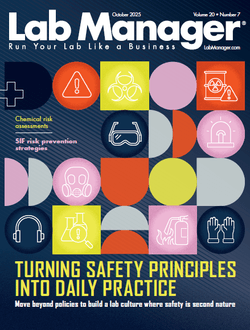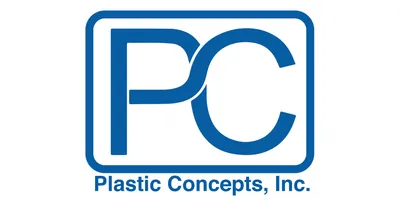The laboratory products market has proved challenging in 2013 with several sectors posting deflated sales. It is no secret that sequestration measures continue to restrain budgets in U.S. academic and government institutions. Despite that, there also appears to be some positive signs.
The laboratory products market has proved challenging in 2013 with several sectors posting deflated sales. It is no secret that sequestration measures continue to restrain budgets in U.S. academic and government institutions, with full-year 2013 lab products market growth rates expected to near -3.5% and -5.5%, respectively. European markets for lab products are also experiencing deflated growth of less than 1%. In total, the global market for lab products is taking a hit in 2013 with growth of 1.2% expected, down a considerable 0.8% from a 2012 rate of 2.0%. Moving forward, the market is expected to improve slightly, nearing 2012 growth levels in 2014.
Lab Manager and Frost & Sullivan conducted a survey of lab workers with knowledge of their lab’s budget to better understand the lab products landscape in 2013 and trends moving forward. A total of 354 respondents qualified for and completed the survey. Global in scope, respondents represent academic, biopharmaceutical, industrial, patient care, and government labs worldwide. Survey participants include lab managers, directors, group and project leaders, scientists, technicians, principal investigators, researchers, and graduate and postdoctoral students.
Survey participant demographics
The demographics of survey participants are graphed on this and the following page. A majority (79%) of respondent labs are based in the United States. One-third of respondents hail from academic institutions, with the remaining two-thirds spread across clinical, industrial, biopharmaceutical, government, and other types of labs. The majority of respondents have the authority to authorize or recommend the purchase of products used in their labs. Most respondents (96%) have knowledge of their lab’s budget, help determine the budget, or provide input into use of the budget for supplies.
Respondent’s Country: Global, 2013 (n=354)
 | United States |  |
 | Canada | |
 | India | |
 | United Kingdom | |
 | France | |
 | Germany | |
 | Italy | |
 | Mexico | |
 | Spain | |
 | Other |
Organization Type: Global, 2013 (n=354)
 | Academic institution |  |
 | Hospital or clinical laboratory | |
 | Manufacturing company laboratory | |
 | Environmental testing laboratory | |
 | Chemical or petrochemical company | |
 | Food, beverage, or agricultural company | |
 | Biotechnology company | |
 | State government laboratory | |
 | Pharmaceutical company | |
 | Contract research organization | |
 | Federal government laboratory | |
 | Other |
Funding sources
Overall, labs rely on internal resources for close to half of their funding. Product/service sales and funds from public granting agencies each account for approximately 20% of lab funding. Not surprisingly, academic and government institutions rely more on public granting agencies than other organization types. Thus, these labs are more susceptible to government actions than are the other groups. According to survey results, academic labs rely on public grants for 44.8% of their funding, meaning any government-based cuts affect nearly half of their budgets. In government institutions, both internal resources and public grants stem from government programs, which means a whopping 79% of these labs’ budgets is susceptible to budget reductions. This explains the greater decline in lab products market growth in this sector compared with academic institutions. Alternatively, biopharmaceutical, industrial, and patient care labs are tied more closely to their product/service sales, and therefore fluctuate more significantly with the state of global economics.
Respondent’s Job Title: Global, 2013 (n=354)
 | Laboratory manager |  |
 | Laboratory director | |
 | Department manager | |
 | Senior researcher | |
 | Staff scientist | |
 | Principal investigator | |
 | Laboratory technician | |
 | Group leader | |
 | Project leader/ project manager | |
 | Graduate student | |
 | Post-doctoral fellow | |
 | Other |
Base: All respondents (n=354).
Purchasing Authority: Global, 2013 (n=354)
 | Authorize |  |
 | Recommend | |
 | Evaluate |
Purchasing Authority: Global, 2013 (n=354)
 | I know what my laboratory spends annually on laboratory products |  |
 | I help determine my laboratory’s product budget | |
 | I provide input regarding how and where my laboratory spends for supplies | |
 | I am somewhat familiar with my laboratory's product budget |
Laboratory products budgets
Consistent with the 2012 lab products survey, nearly all lab decision makers purchase (or expect to purchase) general lab supplies and chemicals, and life science reagents/kits are least prevalently purchased among the product categories surveyed. On average, a greater percentage of labs expect to purchase instruments and equipment in 2013 compared with 2012, although respondent laboratories on average expect 2013 instrument budgets to decline 3.5%. As in 2012, budgets for life science reagents/kits were the largest on average of the total survey sample at $117K per lab. Since these products are sold at a premium cost compared with buying raw chemicals and developing home-brew assays, it is not unexpected that labs that use such reagents and kits spend large portions of their budgets on them.
To indicate the relative lab budget sizes by organization type, the following table presents respondents’ 2013 estimated average budgets and anticipated budget changes in 2014.
Sources of Laboratory Funding: Global, 2013 (n=354)
 | Internal resources |  |
 | Public granting agency | |
 | Product/service sales | |
 | Private granting agency | |
 | Other |
Laboratory Products Purchase: Global, 2012 and 2013
 | 2012 |  |
 | 2013 |
Budgets of academic labs remain relatively small while patient care labs have the largest budgets on average. The budget sizes of government, biopharmaceutical, and industrial labs are most similar to each other, ranging from $265K on average for government labs to $342K on average for industrial labs, with pharmaceutical labs falling in between. Life science reagents and kits, instruments, and general lab supplies are the largest product categories. In 2012’s survey of lab products, chemicals had a greater share of budgets, and life science reagents and kits ranked fourth in budget size instead of first as in this year’s survey. The large size of the life science reagents and kits category results from the massive average size of patient care budgets—$1.3M—for these products. Overall budgets for instruments are expected to decline in 2014 at an average of 3.5%, driven by roughly 15% reductions in instrument budgets at academic and biopharmaceutical labs. Budgets for all other product categories are expected to increase on average, with life science reagents/kits and chemicals leading the way at 6.6% and 4.1% growth, respectively.
Budget growth rates anticipated for 2014 differ substantially across lab and product types, as illustrated in the table on the following page.
| The Big Picture of Laboratory Product Budgets, Anticipated Growth/ Decline in 2014 | ||||||
| Total sample | Academic | Government | Biopharmaceutical | Industrial | Patient care | |
| Average 2013 Laboratory Products Budget (in USD) | $347,302 | $100,598 | $265,872 | $304,292 | $341,612 | $1,321,344 |
| Average of Laboratory Product Budget to… | ||||||
| Chemicals | $38,126 | $11,718 | $14,874 | $49,633 | $47,294 | $98,515 |
| Equipment | $37,929 | $17,008 | $29,327 | $33,890 | $49,889 | $85,498 |
| General lab supplies | $53,465 | $14,763 | $35,505 | $28,362 | $39,382 | $238,953 |
| Glass labware | $12,685 | $5,546 | $8,105 | $8,611 | $18,515 | $25,060 |
| Instruments | $69,146 | $23,736 | $23,531 | $113,020 | $80,074 | $198,356 |
| Life science reagents/kits | $117,411 | $20,117 | $140,125 | $51,196 | $86,206 | $619,823 |
| Plastic labware | $18,540 | $7,710 | $14,405 | $19,580 | $20,252 | $55,139 |
| Average Anticipated Laboratory Product Budget Growth Rates, 2013 to 2014 Green font=increase, red font=decrease | ||||||
| Chemicals | 4.1% | 4.7% | -1.0% | 5.8% | 4.7% | 0.3% |
| Equipment | 1.8% | 3.9% | -0.8% | -9.3% | 0.1% | 9.3% |
| General lab supplies | 1.5% | 1.1% | -0.5% | 3.8% | 1.5% | 1.3% |
| Glass labware | 1.4% | 1.3% | -0.2% | -6.7% | 0.7% | -0.1% |
| Instruments | -3.5% | -15.3% | 4.4% | -15.1% | -2.7% | 4.7% |
| Life science reagents/kits | 6.6% | 9.8% | 9.8% | 3.2% | 5.4% | 6.3% |
| Plastic labware | 2.1% | 1.0% | 1.9% | 5.2% | 1.6% | 0.4% |
| Expected Percent Budget Change, 2013 to 2014 | 2.6% | -0.1% | 5.5% | -4.7% | 1.7% | 4.5% |
Note: Based upon calculations with removals of zero values. Readers are cautioned that results for the biopharmaceutical and government sectors are based on a small number of observations, and should therefore be taken as directional rather than as actionable.
Overall, total average lab product budgets of all organization types are expected to grow at 2.6% in 2014. This demonstrates a very optimistic view of 2014 budgets, with Frost & Sullivan supply-side research suggesting an expected global lab products market growth rate of less than 2% in 2014. Academic labs expect to have their instruments budgets slashed by an average of 15.3%, skewing the 2014 average anticipated budget change of these labs to -0.1%. Meanwhile, government labs expect a jump in budgets in 2014, reporting an average gain of 5.5%, driven by increased purchase of life science reagents and kits. This result is surprising, given that U.S. government research organizations and vendors alike are gearing up for the impact of continued government austerity measures in 2014. Given the global scope of this survey, government-based labs in other regions may be expecting favorable budget increases, or the small number of respondents for government labs (n=25) may be skewing results. In the private sector, biopharmaceutical labs are expecting an average decline in lab products budgets of 4.7%, driven by large declines in instruments and equipment budgets. This could be a result of few new lab openings or expansions expected in 2014, yet again, these results may be biased by the small number of biopharmaceutical respondents (n=34). Industrial labs expect an average product budget increase of 1.7%, declining only in the instruments category. Patient care labs also expect a 2014 boost to lab budgets of 2.5%, driven by a 9.3% increase in equipment budgets. This result may reflect labs’ expanding their test volume intake given the increase of newly insured individuals expected from implementation of the U.S. Affordable Care Act.
Lab purchasing trends
In the era of e-commerce, many suppliers are seeing shifts in how researchers acquire products. To get a sense of the most widely used distribution methods, the following table presents purchasing channel preferences by organization type.
Overall, purchasing products online from the distributor or manufacturer is the preferred acquisition method. However, patient care labs most often prefer to purchase products directly through sales professionals in person, with almost a third of respondents preferring this method. This is a significant difference compared with academic, industrial, and government labs, with less than 10% of each preferring in-person sales. Meanwhile, phone orders may be a dying purchasing channel, with only 9% of the total sample preferring this method via distributor or manufacturer. These trends may cause suppliers to shift sales force priorities to accommodate greater online activity and declining popularity of direct sales and phone orders.
To understand the drivers behind purchasing decisions, respondents were asked their opinions of lab product categories based on various characteristics. A matrix that plots perceived needs based on derived importance (statistically determined by correlating feature ratings) and stated importance (explicitly stated top reasons for selection) is found below.

The results show that when selecting lab products, three tested attributes drive selection: product quality, brand reputation, and quick delivery.
Preferred Purchase Channel: Global, 2013 (n=354)
 | Distributor catalog via online |  |
 | Manufacturer via online | |
 | Procurement office | |
 | Sales professional directly, in person | |
 | Distributor catalog via phone orders | |
 | Manaufacturer via phone orders | |
 | Other |
Having application-specific product features and competitive prices are standard product attributes necessary as a point of entry and consideration. Non-drivers are not important in respondents’ purchasing decision process and include attributes pertaining to the ordering process, such as ease, quickness of ordering, and shipping costs. Additionally, offering loyalty discounts, having products in journals, and being a contracted manufacturer have little to no influence on lab purchases.
Secretly, the direct (sales representatives) and indirect (marketing material) faces of lab product manufacturers are influential and have the opportunity to differentiate manufacturers from one another. The role of sales representatives as a secret driver is surprising given that in other survey results, respondents preferred purchasing products online significantly more often than buying direct through a sales professional in person. However, given that marketing material also falls into the secret driver category, it is likely that lab decision makers seek product information in multiple forms. Sales reps and marketing are widely used methods to relay a product’s features, advantages, applications, and cost, which are critical pieces of information for purchasing decisions. Thus, despite a shift toward online purchasing, lab decision makers continue to rely heavily on product information supplied by the vendor.
Perhaps most important in purchasing decisions, strategic drivers are needs recognized by purchasers as key drivers of their product preferences. Product quality, brand reputation, and quick delivery fall into the strategic driver category. While product quality and brand reputation are straightforward drivers, it is interesting that quick delivery ranks high in importance. One explanation for this ranking could be that labs often reduce the amount of products they maintain in stock during budget limitations, and instead order products as needed and possibly last minute, therefore requiring quick deliveries to keep labs functioning as planned. Given that the majority of labs have experienced some form of budget restraint during the past five years, respondents may have become accustomed to ordering products as needed instead of stocking up, regardless of their current budget situation. In commoditized markets in particular, where one supplier can easily be replaced by another, quick delivery may result in market share gain.
To determine which characteristics decision makers relate to each product category, the following figure displays a perceptual map of how closely a product corresponds to given attributes.

A product positioned closely to a particular attribute indicates that there is a strong perceived correspondence, while the distance between attributes and products represents the extent to which no correlation is perceived. The dashed enclosures represent strong correlations between attributes and the nearby product categories. According to the map, instruments and equipment associate more strongly with the most important strategic drivers and secret drivers, such as quality and brand reputation. Life science reagents and kits associate strongly with the attribute that the product is used in journal publications, likely a result of users seeking assays with demonstrated performance and the use of similar products to verify and build on each other’s research results. Meanwhile, decision makers associated glass labware purchases most closely with low shipping costs and loyalty discounts, a sign that the commoditization of such products makes pricing highest on the decision-making scale. All other lab product categories analyzed, including chemicals, plastic labware, and general lab supplies, are more strongly associated with non-drivers of selection, such as quick and easy order processing and availability from a contracted manufacturer. Thus, lab decision makers correlate these purchases more strongly with the ordering process than with the quality of the product. Consequently, the company and its service may often be more important than the product itself.
Conclusions
Lab decision makers across organization types pinpointed several areas of budget declines anticipated for next year, yet the overall budget picture remains optimistic for 2014. Considering that lab product suppliers continue to endure a slower-than-expected market in 2013, a favorable outlook for average lab product budget increases of 2.6% provides hope for an improved 2014. Suppliers of life science reagents and kits and chemicals are likely to see the greatest gains according to respondent labs. Meanwhile, instrument vendors may face a challenging year if academic, biopharmaceutical, and industrial labs cut instrument budgets as anticipated in this survey. Suppliers of all other lab product types should remain cautiously optimistic for 2014, with average budget growths ranging from 1.4% to 2.1% in these categories. Overall, lab product suppliers would welcome any improvement over the challenging 2013 marketplace.









